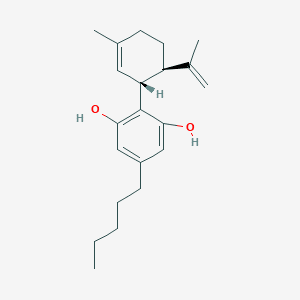Writers from the 12th century refer to cannabis as a remedy in their writings. At the time of Napoleon, marijuana was used as an anti-pain and sedative and to relieve cramps. Therapeutic cannabis was then already processed in various forms, such as in cough syrup or anti-indigestion. It has been, since the dawn of time, one of the most commonly administered plant extracts in the world.
CBD oil seems to be very interesting for users and producers. Below, we’ll discuss more details on the best cannabis oils on the market, their effects, and their benefits.
Modern Cannabis Research
In 1964, modernity saw the research on cannabis grow: this date is that of the isolation of the main psychoactive cannabinoids’ delta-9-THC. In 1980, the presence of the endocannabinoid system (ECS) was discovered in all mammals. This leads to further scientific explorations about ECS and its receptors and ligands.
This allows for a more advanced understanding of the effects of different cannabinoids on the body. Two cannabinoid receptors were then located: CB1 and CB2 receptors 1992 sees the discovery of anandamide, a chemical produced by the central nervous system itself, and adhere to the CB1 receptors.
In 1998, the breakthrough in synthesizing the main active component of THC allowed it to be integrated into synthetic medical preparations that can be prescribed for therapeutic purposes – medical cannabis is being revived in new forms.
Since 2011, specific parts of the cannabis plant (buds, called after transformation marijuana) are allowed in the production of medical cannabis. Since 2017, some European countries have opened their legislation on medical cannabis: the prescription of cannabis is no longer a taboo. Some costs even begin to be borne by health insurance companies.
That said, research on therapeutic cannabis, which is to report on cannabinoids for a therapeutic purpose, still has a lot to do. This field of investigation is dynamic; this subject will prove exciting in the coming years. One thing is clear; it will no longer be possible to scratch the name of cannabis in the medical field: research and studies reporting the positive effects of the cannabis plant are far too numerous.
What Makes the Cannabis Plant So Unique?
The cannabis plant or hemp plant contains more than 480 ingredients, among which are cannabinoids, terpenes, and flavonoids. Cannabinoids are the components responsible for the positive effects of the plant. To date, 113 cannabinoids have been isolated.
The cannabinoid tetrahydrocannabinol (delta-9-THC) remains, of course, the best known and is the subject of the most significant number of researches. This substance is well known because of its exfoliating effect. Cannabidiol or CBD is the second cannabinoid present in large quantities in the plant cannabis or hemp. Its impact and characteristics differ significantly from those of THC, and it has no stimulating effect.
The Effects of Cannabinoids
Cannabinoids influence and interact with ECS receptors found throughout the body (in the brain, nervous system, organs, tissues, and digestive tract, etc.). They occupy these receivers, CB1 and CB2, and activate the transmission of signals in the cell on which these receptors are placed.
These cannabinoids thus act in the body as a neurotransmitter or hormone. The difference with endocannabinoids (cannabinoids produced by the body itself) is that cannabinoids mimic the effect of endocannabinoids.
Cannabinoids affect the limbic system in the brain. This part of the brain has to do with memory, perception, and psychomotricity. It acts physiologically on the mesolimbic system, which itself is a critical factor in the development of pleasure, as well as in painful regions.
Difference Between Marijuana Oil and Cannabis CBD oil
There is a big difference in the way to use medical cannabis. As the title of this section suggests, cannabis drugs (medical marijuana) are not the same as the term “therapeutic cannabis.” The distinction between these terms is important. In the following paragraphs, we discuss these differences.
What is Medicinal Cannabis or Cannabis Drugs?
Plants can not be patented. And the functioning of the pharmaceutical industry is based on the establishment of patents. Companies in the pharmaceutical industry try to synthesize the various components and chemicals found in hemp and cannabis plants to be able to apply for licenses.
Many chemical compounds of the plant have already been synthesized successfully. These artificial cannabinoids are subsequently used in the development and production of cannabis drugs: they are generally associated with other chemical compounds, which can have strong and undesirable side effects.
However, there are also approved cannabis drugs, ie, containing natural cannabinoids (extracts of the plant). The purpose of industrial medicine requires the addition of various other synthetically produced substances.
Complying with cannabis legislation, this “medical cannabis” is only available on prescription. Medicinal cannabis most often contains THC, the substance with psychoactive effects. This substance is absent from CBD oil, although trace amounts may remain, because of the manufacturing process.
Prescription and approved drugs containing extracts of the cannabis plant are, unfortunately, only a small proportion of cannabinoids, and these are artificial, manufactured in the laboratory. There is nothing more natural here.
Why are Cannabis Substances Being Synthetized?
The reason is simple: greed for profits of pharmaceutical companies. Standardization only concerns artificial substances. It is difficult, if not impossible, to normalize a natural substance of plant origin. But the consumer should turn towards products with vegetable substances, of exclusively natural origin. This is the only way for the consumer to be assured of the effect of the product.
Cannabis used therapeutically differs fundamentally from medical marijuana. The NATURAL active components of the cannabis plant are EXCLUSIVELY found there. No chemicals are added, none of the beneficial components of the plant are removed.
The organic cultivation of the hemp plant is done without any chemicals (no fertilizer, no pesticides, no herbicides). Cannabinoids, these plant substances with many therapeutic virtues, can be extracted in the most gentle way possible. Once extracted, they are mixed with an oily base or a tincture, This is a product of purely natural origin and the best option being cold-pressed hemp seed oil.
All the health-promoting ingredients of the cannabis plant or hemp are preserved: the product, this remedy based on cannabinoids, and in our case, cannabidiol remains as natural as possible.
Different Forms of Cannabis

Therapeutic cannabis exists in various pharmaceutical forms. Most of these forms remain illegal because of their delta-9-THC content. Delta-9-THC is a psychoactive substance under the French and European Narcotics Act. It is banned for consumption and trade. The legislation only allows products whose plant producing the final product has a THC content of less than 0.2%.
It is possible to find extracts of the cannabis plant in the following forms:
- Tobacco (smoking)
- Spray (inhalation)
- Liquid dyes
- Food products (ingestion)
- Tablets to suck
- Oils (ingestion, sublingually or externally)
CBD Oil as a Possible Remedy
The potentially beneficial effects of cannabis are available. Many types of research and studies on medicinal cannabis attest to a positive impact of cannabinoids, and detailed and long-term clinical studies are still lacking. Modern research on this subject is still in its infancy. This is why the title of this paragraph refers to “possible” beneficial effects of using cannabis plant extracts as a remedy.
Conclusion
Cannabis for therapeutic use is relatively safe to use; the associated side effects are rare and very light so tolerable. However, the lack of longer-term studies should be noted, and these should be done to confirm the long-term safety of the benefits of cannabinoids.
The potential of using medical cannabis to treat diseases seems enormous. We can stay alert: medical research will surely tell us more soon.
But you should always pay attention to the use of synthetic substances or manufactured in the laboratory: they seem strongly against us in the case of the use of cannabis for therapeutic purposes. Turn to pure herbal supplements. Use natural cannabis CBD oil for therapeutic use and not synthetic cannabis drugs!
- How Automated Dispensing Cabinets (ADCs) revolutionized point-of-care medication administration? - November 23, 2021
- How to Select the Best and Most Affordable Fitness Tools - October 31, 2021
- What is Causing the Trend of Nursing Turnover and How to Stop It - August 24, 2021


